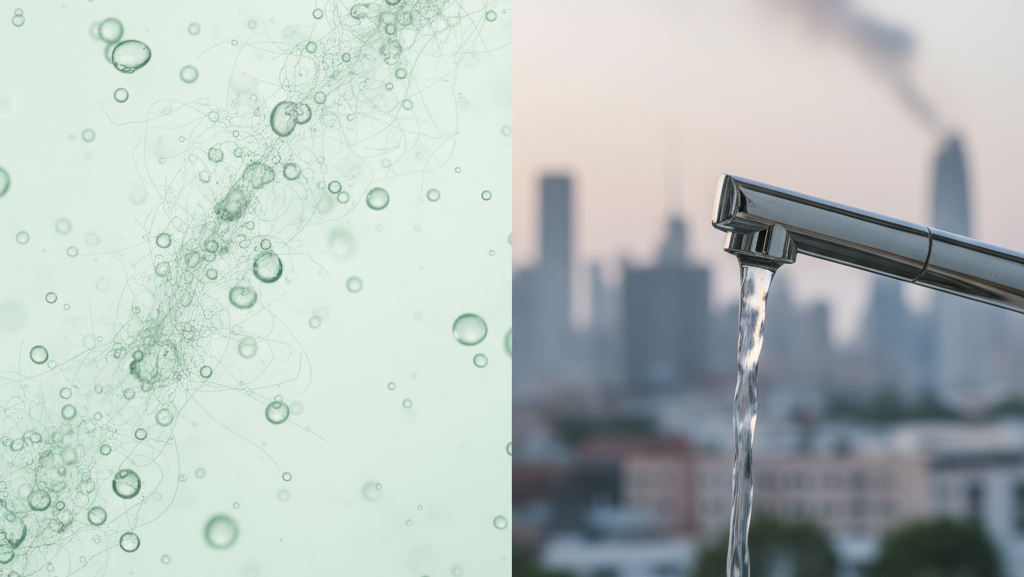
Microplastics in Air & Water (2025): What We Know—and 6 Easy Ways to Reduce Exposure
From indoor air to bottled and tap water, microplastics are showing up almost everywhere. Here’s the latest evidence and practical steps you can take at home.
What are microplastics—and where are they found?
Microplastics (≤5 mm) and even nanoplastics (far smaller) have been detected in water, soil, and the air. UNEP notes millions of tonnes enter the environment annually and could double by 2040. UNEP – UN Environment Programme
Water: bottled vs. tap
Recent imaging work found hundreds of thousands of plastic particles per liter in some bottled waters, the majority being nanoplastics. PNASNational Institutes of Health (NIH)
By contrast, surveys show wide variation in tap water; levels are generally lower than in bottled water but still measurable. ScienceDirect+1
Does standard treatment help?
Reviews of drinking-water treatment plants (DWTPs) suggest conventional steps (coagulation/flocculation, sedimentation, sand filtration, activated carbon) can remove a large share of microplastics, often >80–95% for particles above ~1 μm, though smaller particles are harder to capture. FrontiersScienceDirect
WHO’s overview emphasizes that while health risks require more research, improving catchment protection and treatment—and reducing plastic pollution—are prudent. World Health Organization
A simple kitchen step that actually works
A 2024 study highlighted by the American Chemical Society found that boiling tap water and then filtering can remove up to ~90% of nano-/microplastics in hard water (limescale crystals trap particles), with lower efficiency in soft water. American Chemical SocietyYale E360
The air we breathe (indoors counts, too)
Microplastics are not just in water; indoor air can contain PM10 microplastics that we inhale daily, often from textiles and household dust. PLOSScienceDirect
6 easy ways to reduce exposure at home
- Prefer filtered tap over bottled to lower nanoplastic intake; keep reusable glass/steel bottles. PNAS
- Use effective point-of-use filtration (e.g., RO or ultrafiltration) and maintain filters on schedule. Reviews show these steps materially cut microplastics. ScienceDirectFrontiers
- Boil hard tap water, then filter (where practical) to leverage limescale trapping. American Chemical Society
- Reduce plastic shedding: avoid microwaving in plastic; use wood/glass boards and containers. (General best practice supported by exposure studies and expert guidance.) UNEP – UN Environment Programme
- Tackle indoor air: vacuum with HEPA, wash synthetics on gentle/low-shedding cycles, and improve ventilation; airborne fibers are a known component. ScienceDirect
- Stay realistic: Evidence on health outcomes is still emerging—focus on practical reduction rather than chasing “zero.” WHO underscores the need for standardized methods and more data. World Health Organization
Key takeaways
- Microplastics show up in both water and air; bottled water can be a notable source of nanoplastics. PNAS
- Modern treatment & good home filtration substantially reduce microplastics, though tiny particles are harder to remove. Frontiers
- Simple habits (filtered tap, proper maintenance, boiling hard water, indoor-air hygiene) meaningfully cut exposure. American Chemical Society
Want a site-specific recommendation?
Talk to our team about RO/UF options and filter-change schedules, or Book Installation now.
Culligan: Microplastics in Water—A Closer Look (updated Jan 2025). Culligan
Share :
